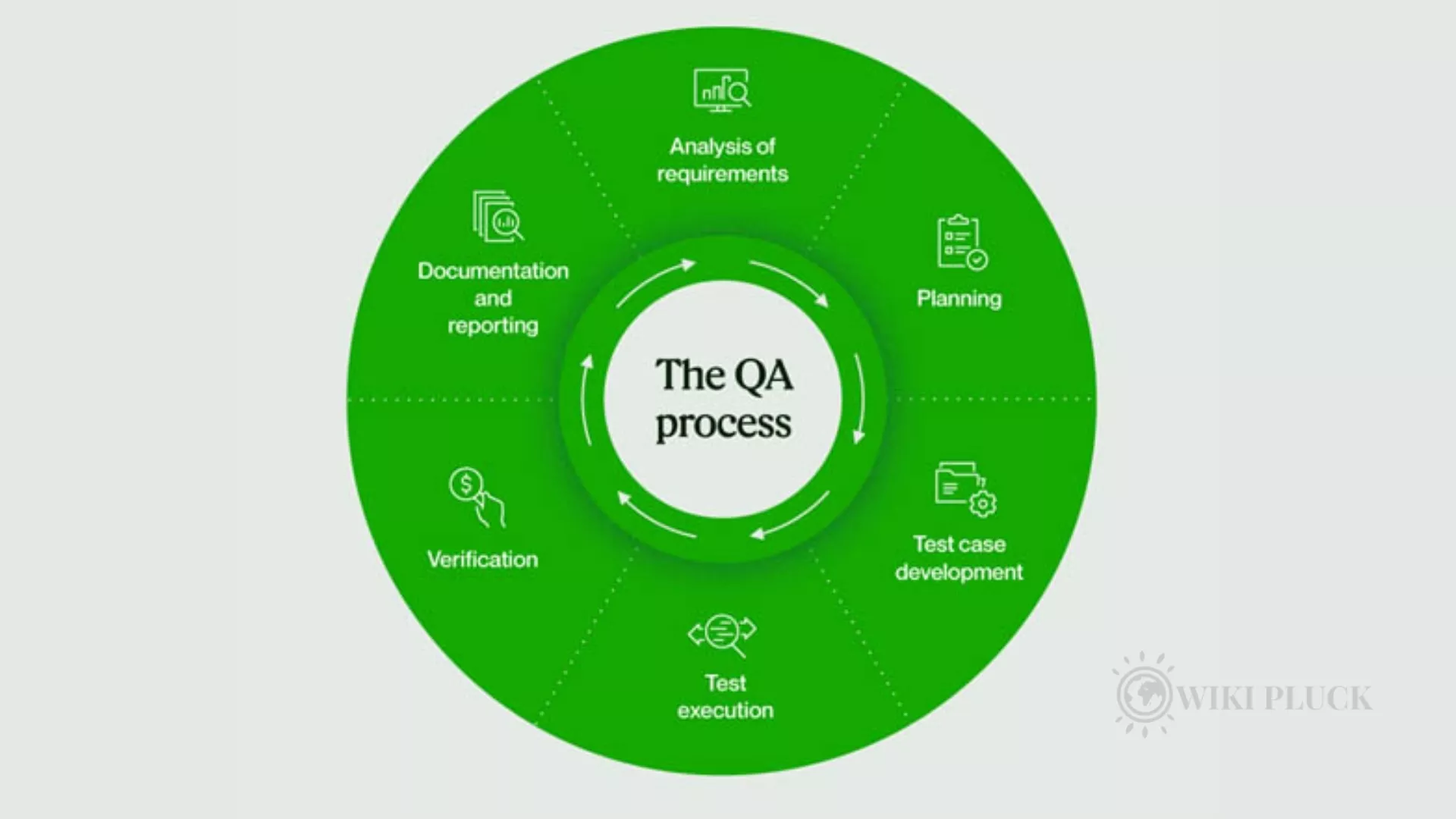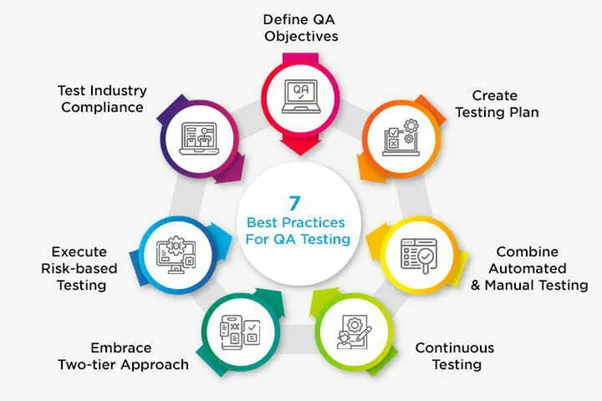Imagine: You meticulously inspect cakes, hunting flaws. But what if oversight expanded to include oven temperatures, ingredient freshness, and layout design? Such is QA’s evolving role in agile software development. It’s not solely about finding bugs now; it’s confirming the entire experience is seamless, protected, and efficient.
From Bug Hunters to Quality Champions:
Traditionally, testers tirelessly scanned code before launch, bug snipers. However, agile demands flexibility – rapid iterations, continuous feedback, and early value. Testers thus become:
Early Collaborators: Join teams from inception, guiding with early input, not sole end-game inspectors.
Multifaceted Ninjas: Wield diverse skills beyond functionality like performance, security, and usability.
Automation Advocates: Leverage automation to free time for profound, strategic testing rather than endless repetition.

The Expanding Testing Arsenal:
Manual testing alone can no longer suffice. Developers now utilize a virtuoso toolkit for diverse testing necessities:
Performance is probed by applications resembling genuine user volumes, validating software endures peak needs. Picture analyzing a bakery’s oven under real holiday demand!
Security scans uncover vulnerabilities beforehand, maintaining program safety and consumer data integrity. It’s comparable to fitted impenetrable locks guarding a bakery from theft.
Early and frequent user feedback through recording ensures not just functionality but intuitiveness and enjoyment. Like obtaining client assessments on a cake’s flavour and appearance before opening your doors.
Automation expedites repetitive tasks, freeing examiners for strategic innovation. Just as mechanizing regular checks of each sweet for fundamental standards, allowing focus on inventive tastes.

Also Read: Security Testing in the Age of Cybersecurity Threats
The Symphony of Excellence:
Every technique plays its own part, complementary talents in an orchestra, harmonizing to generate a premium software experience.
Functional testing: Verifies the software performs its intended function of providing recipes for delightfully irresistible baked goods. Ensuring each recipe reliably produces the promised flavours keeps customers coming back for more.
Load testing: Guarantees the website can smoothly handle heavy traffic volumes like the bustling Saturday mornings in the bakery without buckling under peak demand. Customers deserve fast, frustration-free service whether browsing recipes or placing orders.
Security testing: Safeguards users’ personal details and payment information from unauthorized access, protecting the privacy and peace of mind essential to building trust with clients. No one wants to worry about their data falling into the wrong hands any more than exposed cakes or pastries.
Usability testing: Confirms even novice bakers can navigate the site and successfully follow any recipe on their first try. The intuitive design leaves users feeling empowered rather than overwhelmed, just as easy-to-prepare baked goods encourage home cooks of all skill levels.
Benefits of a Comprehensive Testing Approach:
Embracing a wider testing focus yields abundant benefits for businesses: fewer last-minute glitches mean swifter releases to satisfy growing demand. Identifying problems early spares the delay and expense of fixing issues later. Ensuring a satisfying experience encourages repeat custom and word-of-mouth promotion, keys to sustainable success in any industry but especially one revolving around pleasures of the table.
Enhanced security: Proactive security testing safeguards sensitive data and builds trust with your customers, making your bakery a haven of security and peace of mind. Continuous testing and monitoring protect both shoppers and shopkeepers.
The Future of QA: Embracing Continuous Testing
The future of QA testing calls for integrating testing into every phase of development. Imagine continuously measuring ingredients, oven heat, and customer comments to guarantee each cake satisfies. This requires starting tests at the start, even during planning and layout. Testing ideas early is like experimenting with recipes before baking. Efficiently managing and sharing test info across teams ensures all bakers use the same ingredients.
A regular and available supply of fresh fixings for every cook has quality control covered. Fostering close cooperation between evaluators, makers, and interested parties produces harmonious results. Your bakers, decorators, and delivery crew collaboration guarantees excellent consumer experiences.
QA testing is no longer a solitary pursuit; it’s a collaborative effort toward crafting exceptional software experiences. By embracing varied testing approaches, automation, and continuous integration, QA teams can evolve from bug-catching to ensuring user happiness.
Beyond Bugs: Unveiling the Arsenal of Modern QA Testing
Imagine: You’re meticulously reviewing a confection, guaranteeing perfection before a global presentation. But your role now expands beyond aesthetics, including oven efficiency, ingredient quality, and layout planning.
Welcome to evolving QA testing in agile times, where quality assurance transcends mere flaw removal to guarantee delightful, safe, and efficient software. Let’s delve into expanded testing tools, investigating certain techniques within categories.
Also Read: The Evolving Landscape Of Software Testing Services: Current Trends And What Lies Ahead
Performance Testing: Conducting a Flawless Symphony
Performance testing confirms your software handles peak loads gracefully, preventing user frustration while guaranteeing smooth operation. Picture your bakeshop oven humming flawlessly even during festive seasons! Key methods:
Load Testing: Tools like JMeter or LoadRunner virtually create realistic user loads, mimicking customer traffic patterns. Envision generating virtual customers placing dessert orders, stressing your online system to recognize bottlenecks.
Stress Testing: Pushing software beyond limits reveals breaking points. This tests an oven’s temperature to handle extreme demands.
Scalability Testing: Measuring performance on differing hardware ensures smooth scaling as customers grow. Think testing baking equipment with varying ingredient amounts to accommodate future expansion.
Securing Your Digital Bakery Through Vigilant Security
Security ensures user trust and protects against vulnerability, keeping software a refuge of confidence. Consider installing robust locks and surveillance around the bakery. Crucial techniques include:
Static Code Analysis: Tools like SonarQube or Fortify scrutinize source code for potential security issues, much like meticulously reviewing recipes for allergens or safety risks.
Dynamic Application Security Testing: Tools like Burp Suite simulate real attacks to identify application susceptibilities to SQL injection or cross-site scripting, gauging defenses for the bakery’s security.
Penetration Testing: Ethical hackers manually probe software for breakable spots, providing a deeper comprehension of risks. Picture engaging security consultants to test physical security, pinpointing entrance points for intruders.
User Experience Testing: Crafting Satisfying Interactions
User experience testing ensures your software is intuitive, pleasing, and usable by all. Imagine patrons exploring your bakery smoothly and happily, leaving them desiring more! Here are some integral techniques:
Usability Testing: Watch actual users engaging with your software, identifying issues like indistinct labels or perplexing navigation. Picture having patrons test your bakery layout and appliances to guarantee ease of use and accessibility for everyone.
Accessibility Testing: Tools like WAVE or Accessibility Insights for Web confirm your software can be used by people with disabilities, much like constructing your bakery physically accessible to all, no matter one’s capacities.
A/B Testing: Contrast various versions of your software with real users to see which accomplishes better. Picture trying diverse cake flavours and decorations to see which ones patrons favour, continuously optimizing the experience.
Beyond Techniques: Integrating Quality into the Fabric of Development
While mastering exact techniques is essential, the future of QA lies in continuous software testing company India, seamlessly weaving it into every period of progress? Picture persistently observing your bakery’s ingredients, oven heat, and patron feedback to confirm every cake is a work of art. This necessitates:
Shift-Left Testing: Planning testing from the earliest concept stages like adding dry ingredients before mixing a batter. Requirements and designs can be vetted for flaws just as recipes are tweaked.
Test Data Management: Share test components effectively across groups to ensure all are using identical elements. A coordinated archive of fresh elements is maintained for every baker.
Collaboration and Communication: Foster close cooperation between examiners, engineers, and interested parties by dismantling silos and cultivating quality harmony. Imagine your bakers, decorators, and delivery team meticulously working in unison to guarantee exceptional consumer experiences.
Also Read: From Vision to Reality: The Journey of Building Custom Software for Your Needs
Embracing Evolution: From Bug Eliminators to Quality Champions
In today’s iterative landscape, QA testing extends past individual effort; it’s a collective journey toward offering exceptional software experiences. By leveraging the diverse tools and techniques within performance, security, and user experience testing, and embracing continuous integration, QA teams can progress from fault fixers to quality champions.
Recall, that quality is not an accessory; it’s the essence of every delectable bite your software offers. So, embrace the expanding role of QA, bake quality into your development process, and watch your software rise to the top!
Ignite Your QA Journey: Actionable Tips for Modern Testing
The world of QA testing is brimming with possibilities, yet where to even start the journey? Fear not, creating quality software requires no master’s expertise. Consider these actionable tips to fuel your modern testing practices:
Start by walking before running – focus energy initially on a specific area like a performance of a critical workflow, implementing techniques effectively. With each small success, expand the scope step-by-careful-step.
Embrace automation and the freedom it brings, allowing strategic thinking rather than repetitive regression. Explore innovative methods such as security or experience analysis.
Break down barriers by collaboration across roles. Partner early and openly with developers, sharing testing insights and participating in design. Together foster shared ownership for quality outcomes.
Quality assurance means more than simply finding faults. Advocate for user-centric priorities, with usability and accessibility at the forefront. Include diverse voices throughout testing to ensure the software serves all.
Embrace Continuous Learning: The testing landscape changes constantly. Staying knowledgeable requires attentiveness by participating in workshops, reading industry blogs, and exploring online resources like the ISTQB website. Share insights with colleagues and cultivate a culture of continuous betterment.
Leverage freely Available and Open-Source Instruments: Budget restrictions shouldn’t discourage testing efforts. Explore the bountiful free and open-source testing instruments available, ranging from JMeter for functionality testing to Selenium for web automation.
Measure and Monitor Advancement: Don’t just test, quantify impact! Track pivotal metrics like defect discovery rate or test automation coverage. Employ data to pinpoint areas for amelioration and showcase the value of testing endeavours.
Construct a Testing Community: Connect with other testing professionals online or at local meetups. Exchange experiences, learn from each other’s trials, and stay inspired by the vibrant testing community.
Bear in Mind, It’s a Journey, Not a Destination: Contemporary testing is an ongoing method, not a fixed state. Consistently familiarize practices, experiment with novel techniques, and grip the ever-evolving scene of software development.
Celebrate Your Wins: Recognizing and celebrating successes is crucial for motivation. Acknowledge your team’s efforts, share positive feedback, and use testing achievements to fuel your journey towards even greater quality. Though the path is long, each small victory motivates us forward.
By following these tips and fostering a culture of continuous learning and collaboration, you can transform your QA practices and deliver software experiences that are not only bug-free but also delightful, secure, and accessible to all. Remember, cultivating excellence today shapes the experiences that will be savoured for years to come.
Also Read: What is the Importance of User Testing in Web Development?
FAQs about Modernizing Quality Assurance:
What differences set traditional and modern QA methodologies apart?
Traditional testing focused primarily on detecting bugs through functional testing. Modern QA casts a wider net, encompassing performance optimization, security verification, accessibility audits, and continuous testing integrated throughout the development cycle. A holistic approach better serves today’s diverse users.
What benefits does prioritizing performance offer organizations?
Beyond superior speed, proactive performance testing helps catch issues early. It also strengthens processes like optimization, scalability planning, and resource management. Rare are the users who appreciate sluggishness. Make sure software flies, not plods, with diligent performance QA.
As the driving force behind WikiPluck, I am dedicated to curating and sharing insightful knowledge across a spectrum of subjects. From technology trends to Business advice, WikiPluck strives to be a go-to resource for those seeking to enhance their understanding and make informed decisions.
Join me on this journey of discovery and enlightenment as we pluck the gems of wisdom from the vast landscape of knowledge.
